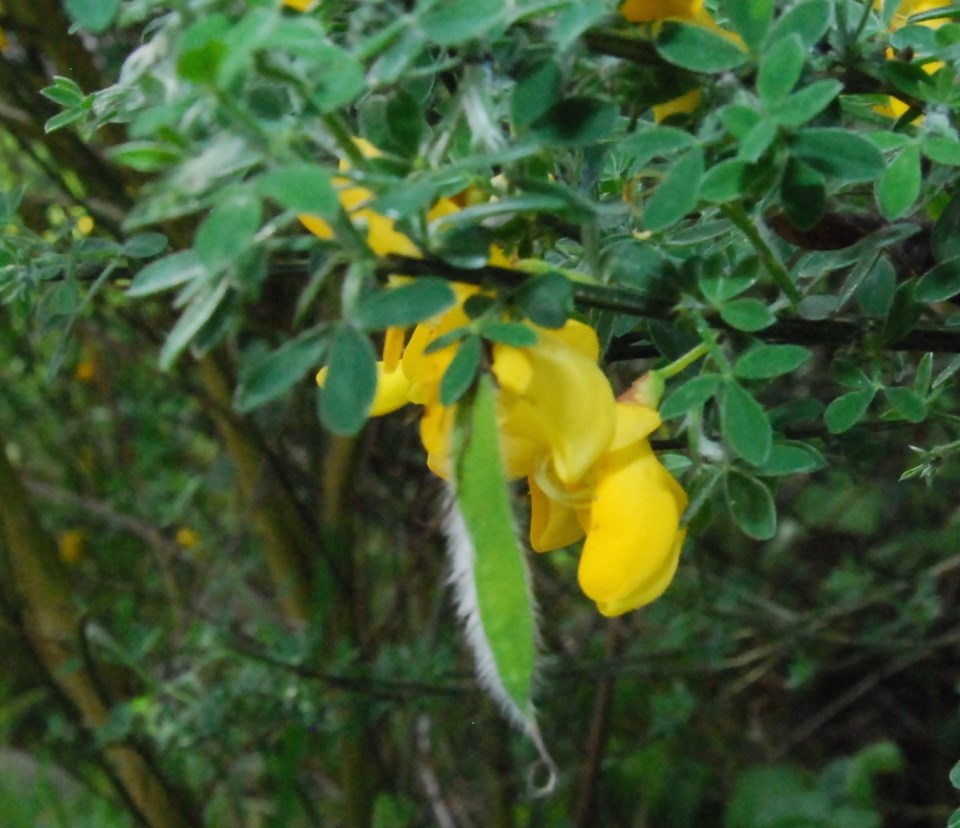Cut down Broom while it’s in bloom
LOUISE LOIK
Editor
The smell is tropical, a cross between coconut and oleander. The flowers, a bit like bright yellow snapdragons. The problem is that the plant is invasive, an aggressive bully taking over territory up and down the coast.
Scotch broom, originated in the Sandwich Islands, and was planted on Vancouver Island by a ship’s captain, thereby changing ecosystems long into the future. It replaces forage plants, and is a serious competitor to conifer seedlings.
Given that each plant can produce up to 3500 pods, each containing 5-12 seeds, it spreads quickly. On a warm day, as the pods dry in the sun, you can hear them pop open like kernels of corn in a popper. The seeds shoot out with such force they can land five metres away.
The invasiveness of the plant is one part of the problem with this plant. Another problem is that they are not attractive to pollinators like bees. Researchers think this may be due to the resins within the plant that contain alkaloids, which happens to be a toxin for people. These resins are also highly flammable, so a street lined with broom could become a bit of a hazard in fire season, especially since the plant will burn whether green or brown.
To manage the invasion, other places like Saltspring Island have a campaign they call, “Cut Broom in Bloom.” The reason to target the plant while it is in bloom is that a booming plant is devoting all its resources to the blooms, leaving it with little resilience against attacks like cutting. Instead of growing back, it’s more likely to die. To effectively cutting back broom, you still have to cut just below the topsoil. Because the seeds need sun to germinate, seeds that get uncovered in the soil now have a chance to grow. This makes it hard to just pull young plants from the ground. Chances are, you’ll disturb an area of earth, triggering germination of a multitude of seeds., What adds to the challenge is that seeds remain viable for long periods. By cutting the broom while it’s in bloom, you prevent the seeds from being released in the first place.
On Saltspring, the cut broom is providing fodder for goats. If you manage to remove branches, or a plant, it’s another way you can inadvertently spread seeds.
Best idea? Cut broom in bloom.
PlantWise is a prevention-based program designed to encourage people to choose only safe, non-invasive plants. Grow Me Instead, a resource that lists 26 invasive horticulture plants with multiple safe and attractive alternatives for all growing zones. now available: the PlantWise mobile app and website at www.beplantwise.ca. - See more at:
- See more at: http://bcinvasives.ca/invasive-species/identify/invasive-species/invasive-plants/scotch-broom/#sthash.TvFbKuhz.dpuf
Similar Species: Spanish broom flowers grow at the tips of stems (crowning the plant), whereas Scotch broom flowers grow along stems.
E-flora.bc.ca



